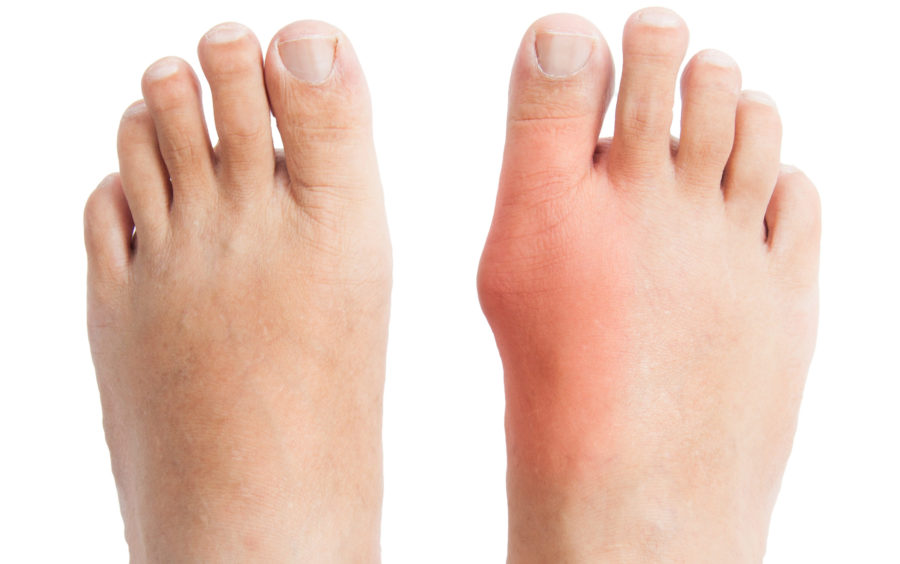Did you know gout is a form of arthritis? Why does the body react this way? Learn the symptoms and risk factors of this painful condition that can affect anyone.
Symptoms
Gout arrives as a sudden attack, often in the middle of the night. There is severe pain, redness, heat and inflammation in one or more joints. The Mayo Clinic states gout most commonly occurs in the big toe joint but can also appear in the ankles, knees, fingers, elbows and wrists. The pain can be so severe that even the light touch of bedding can be excruciating. The most intense pain typically lasts for four to twelve hours, but the duller pain may linger for days or weeks.
Causes
According to the Mayo Clinic, gout is caused by the buildup of urate crystals in the joints, which form when there is excess uric acid in the blood. The body produces uric acid to break down purines, naturally occurring in the body and also from certain foods, then excrete after passing through the kidneys. When there is excess uric acid, either from the body producing too much or the kidneys not filtering correctly, urate crystals form.
Risk Factors
While anyone can be a victim of a gout attack, there are some risk factors that make it more likely.
AGE AND SEX
Men are more likely to develop gout than women and at a younger age. Men typically experience gout between 30-50 years of age while women typically don’t experience gout attacks until they are postmenopausal.
DIET
A diet with many foods rich in purines may predispose someone to gout attacks. Food culprits include red meat, organ meat such as liver, seafood and shellfish (trout, sardines, scallops, anchovies, mussels and tuna), beverages sweetened with fruit juice and alcoholic beverages, especially beer.
FAMILY HISTORY
Risk for gout increases if family members also suffer from it.
WEIGHT
Individuals who are higher-weight tend to produce more uric acid and the kidneys have a harder time excreting it all.
OTHER MEDICAL CONDITIONS
Chronic conditions such as diabetes, metabolic syndrome, obesity, heart and kidney diseases as well as uncontrolled high blood pressure are all factors that contribute to a higher risk of gout.
MEDICATIONS
Some drugs used as anti-rejection medications for transplant recipients can cause an increase in uric acid as well as drugs for hypertension and low-dose aspirin, which many people take to prevent heart attacks.
What To Do
If you suspect you are having a gout attack, contact your provider. They can often make a diagnosis based on your symptoms and the physical appearance of the affected joint. They may also wish to do imaging or lab work to confirm the diagnosis. Based on your health history, they may prescribe medications to prevent attacks or treat an acute attack. You may also be referred to a rheumatologist for further evaluation and follow-up.
RELATED ARTICLES
6 Hygiene Habits You’re Doing Wrong
Say Aloha to Hula Hoop Fitness

